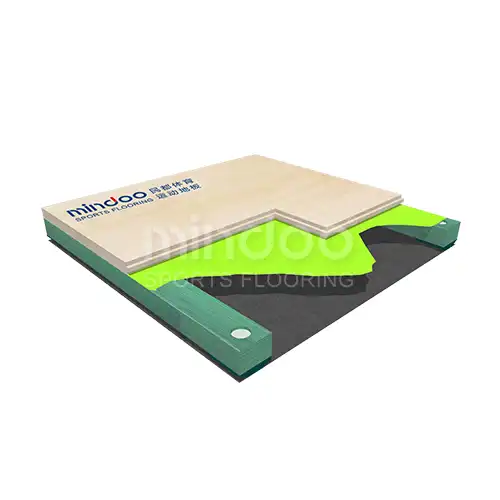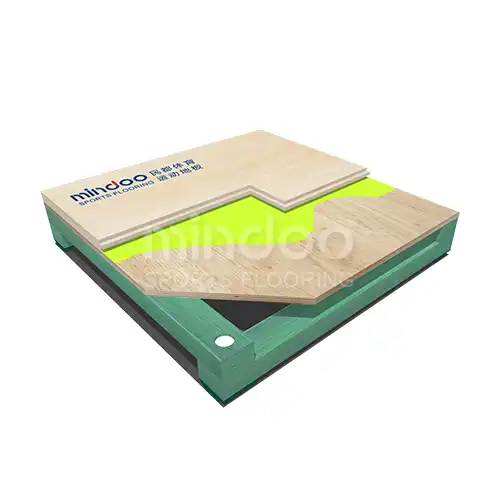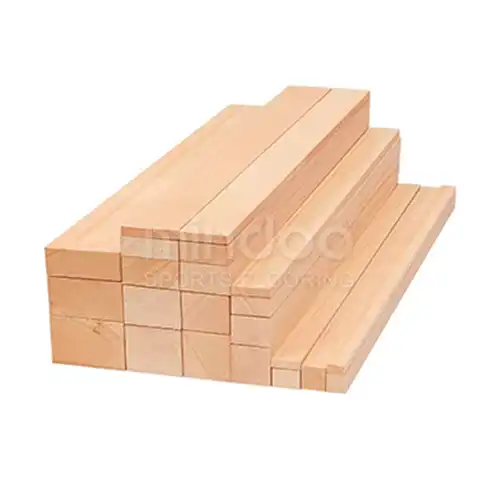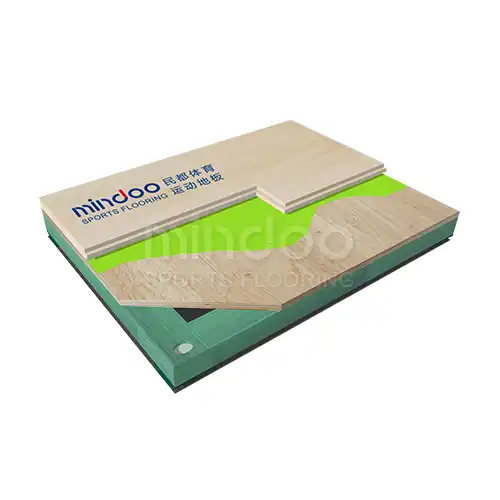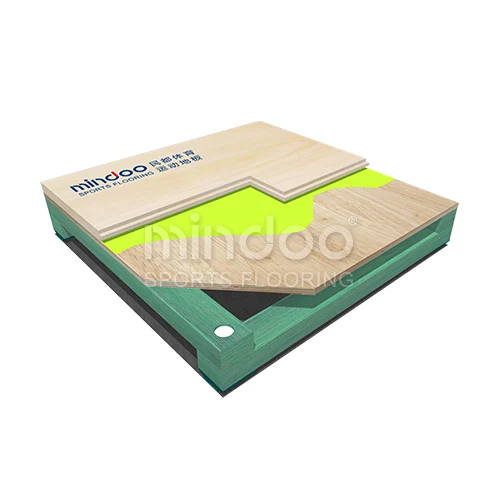Protecting Athletes: How Sports Hardwood Flooring’s Shock Absorption and Protection Features Reduce Injury Risk in Major International Events
Athlete injuries, whether during training or competition, have always been a significant concern in competitive sports. In major international events like the Olympics, the FIFA World Cup, and the NBA, injuries not only affect an athlete's career but also impact the overall level of competition and viewing experience. Therefore, minimizing athlete injuries remains a critical focus in the design of sports venues and the selection of materials.
In recent years, sports hardwood flooring has become a preferred choice for many international event venues due to its exceptional shock absorption and protection features. This article explores how sports hardwood flooring can reduce injury risk based on injury cases from major international events, examining how its shock-absorbing and protective qualities help lower the likelihood of injury.

1. The Root Cause of Athlete Injuries: Inadequate Surfaces
Before delving into how sports hardwood flooring reduces injuries, it’s important to understand one of the key factors behind many athletic injuries: inadequate surfaces. Injuries like sprains, strains, and joint damage are often closely related to factors like the hardness, elasticity, and friction of the playing surface. If a surface is too hard or lacks sufficient elasticity, it places a greater strain on athletes' joints, bones, and soft tissues, increasing the likelihood of injury.
In contrast, high-quality sports hardwood flooring, with its superior shock absorption and protection properties, can significantly reduce injuries caused by poor surface conditions, providing a safer environment for athletes.
2. Shock Absorption: Reducing Impact Forces
One of the key features of sports hardwood flooring is its shock absorption capacity. Through its specially designed structure and materials, it effectively absorbs and disperses the impact forces generated during athletic movements. This function is crucial in reducing injuries, particularly in high-intensity sports.
For example, in basketball, athletes frequently jump, change directions quickly, and stop abruptly. Each time they land, significant impact is exerted on their knees, ankles, and spine. If the surface is too hard, these impacts are directly transmitted to the athlete’s body, which over time can lead to joint issues, soft tissue injuries, or fractures. High-quality sports hardwood flooring absorbs these impact forces, reducing the strain on athletes' bodies.
Research by the American College of Sports Medicine (ACSM) has shown that sports hardwood flooring with good shock-absorbing capabilities can lower the incidence of injuries, particularly in the knees and spine, by providing better protection during high-impact movements.
3. Protection Function: Reducing Sprains and Strains
In addition to shock absorption, sports hardwood flooring’s protective features play a significant role in preventing sprains, strains, and other types of injuries. The surface of high-quality sports hardwood flooring offers the ideal balance of friction and support, helping to reduce the risk of slipping, twisting, and injury.
In sports like football, basketball, and badminton, athletes often make quick changes of direction, sudden stops, and jumps. If the surface lacks adequate grip or provides too much friction, it can put a tremendous amount of stress on their knees, ankle joints, and hips, leading to sprains and strains.
For instance, NBA courts are typically made with high-quality sports hardwood flooring, one of the goals being to provide enough friction while preventing excessive grip that might cause athletes to slip or twist an ankle. Additionally, the smoothness and elasticity of the flooring ensure that athletes can make fast starts and directional changes without risking injury due to the surface.

4. Injury Case Studies from International Events
Case 1: Tokyo 2020 Olympic Basketball Court
During the Tokyo 2020 Olympics, despite the high-intensity collisions and rapid movements in basketball, no significant injuries were attributed to the surface. This was due to the use of high-quality sports hardwood flooring in the venues, which effectively reduced the impact forces experienced by athletes when landing.
Case 2: NBA Season and Knee Protection
In the NBA, athletes’ knees are subjected to immense impact forces during the season. Most arenas in the NBA use sports hardwood flooring that meets the highest standards. Studies show that arenas with this type of flooring have a significantly lower incidence of knee injuries compared to venues with traditional hard surfaces or other unsuitable flooring materials. The shock-absorbing properties of the hardwood flooring effectively reduce stress on the knees during intense movements.
Case 3: Premier League Football and Ankle Protection
Although football fields are typically made of grass, some indoor training facilities and small competition venues are now adopting sports hardwood flooring, particularly in training sessions. Some Premier League clubs have begun using high-quality sports hardwood flooring to reduce the strain on players' ankles during training. The excellent shock absorption of the wood floors significantly reduces the impact on their joints, thereby lowering the risk of injury.
5. The Science Behind Sports Hardwood Flooring’s Protection
The shock absorption and protection features of sports hardwood flooring are not coincidental, but rather the result of careful design and material selection. Sports hardwood floors typically consist of multiple layers of wood and specialized cushioning layers, which work together to disperse impact forces and minimize the pressure athletes experience during high-intensity movements.

Layered Design and Shock Absorption
The layered design of sports hardwood flooring, including a cushioning or shock-absorbing underlay, helps to absorb the vibrations generated by an athlete's landing. This shock absorption significantly reduces the physical stress on joints and muscles, lowering the risk of injury during athletic activities.
Elasticity and Comfort of the Material
Wood itself has a natural elasticity, and modern sports hardwood floors are enhanced with engineered techniques to improve performance. This elasticity ensures that athletes experience greater comfort when making contact with the floor, reducing the discomfort and injury risk associated with harder surfaces.
Sports Hardwood Flooring as a Vital Injury Prevention Tool
The shock absorption and protection features of sports hardwood flooring have been proven through numerous injury case studies from international events, demonstrating their significant role in reducing athlete injuries. By opting for high-quality sports hardwood flooring, event venues can not only enhance the performance of athletes but also minimize injuries caused by inadequate surfaces, ensuring the smooth progression of major sports events.
As athlete health and safety become increasingly important in global sports events, sports hardwood flooring will undoubtedly remain an essential part of venue construction. Whether for top-tier international competitions or everyday training and matches, high-quality sports hardwood floors will continue to provide a safer and more comfortable environment, reducing unnecessary injuries and protecting athletes' careers and health.
